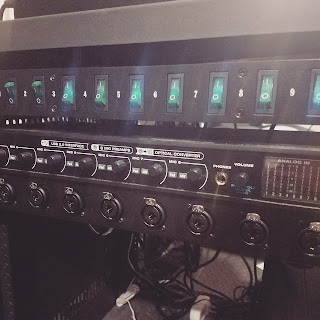Elektrosluch!

Hey everyone! With the release of my electromagnetic sound library on the horizon, I wanted to share some of the process of building an Elektrosluch and recording the sounds. For those of you who don't know, an Elektrosluch is a type of induction coil pickup. These devices pick up electromagnetic fields emitted by electronic devices, if it's got power it probably sounds cool. The most common version of this device that I've seen is produced by LOM . They have various versions and a DIY kit. I'm not sure about you, but I have never been lucky enough to see the store page with an 'in stock' label on it. Some lucky colleagues have snagged one or two in passing but I could never seem to find the window. Fed up with waiting I discovered that the schematic is open source! LOM even links Makezine.com in their FAQ, parts list and instructions included. I have decided to draw my own diagram that labels each part so you don't get lost referencing back and forth of ...

